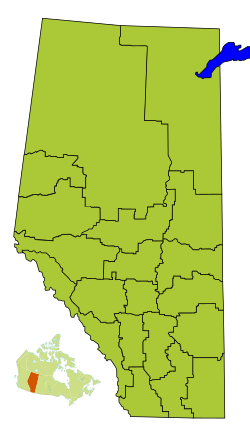Division No. 2, Alberta facts for kids
Quick facts for kids
Division No. 2
|
|
|---|---|
|
Census division in Alberta
|
|
| Country | Canada |
| Province | Alberta |
| Area | |
| • Total | 17,662 km2 (6,819 sq mi) |
| Population
(2011)
|
|
| • Total | 156,536 |
| • Density | 8.86287/km2 (22.9547/sq mi) |
Division No. 2 is a special area in Alberta, Canada. It is like a big region used for counting people and gathering information. This division is in the south-central part of southern Alberta. It includes the city of Lethbridge, which is a major city there.
Contents
What is a Census Division?
A census division is a way to divide a province into smaller areas. These areas help Statistics Canada collect and organize information about people. This includes how many people live there and how they live. Division No. 2 is one of these important areas in Alberta.
Communities in Division No. 2
Within Division No. 2, there are many different types of communities. These are called census subdivisions. They include cities, towns, villages, hamlets, and municipal districts. Each type of community has its own way of being governed.
Cities
Cities are the largest communities in the division.
Towns
Towns are smaller than cities but still have many people.
Villages
Villages are smaller than towns.
Hamlets
Hamlets are very small communities. They are often part of a larger municipal district.
- Bow City
- Cassils
- Chin
- Diamond City
- Enchant
- Gem
- Grassy Lake
- Hays
- Iron Springs
- Monarch
- New Dayton
- Patricia
- Purple Springs
- Rainier
- Rolling Hills
- Scandia
- Tilley
- Turin
- Wrentham
Municipal Districts
Municipal districts are large rural areas. They often include smaller hamlets and villages.
Population and Land Area
In the 2021 Canadian census, Division No. 2 had a population of 178,513 people. These people lived in 66,523 homes. This was a change of about 5.2% from its population in 2016.
The total land area of Division No. 2 is about 17,456 square kilometers (6,740 square miles). This means that in 2021, there were about 10.2 people living in each square kilometer of land. This is called the population density.
See also
 In Spanish: División n.º 2 (Alberta) para niños
In Spanish: División n.º 2 (Alberta) para niños


